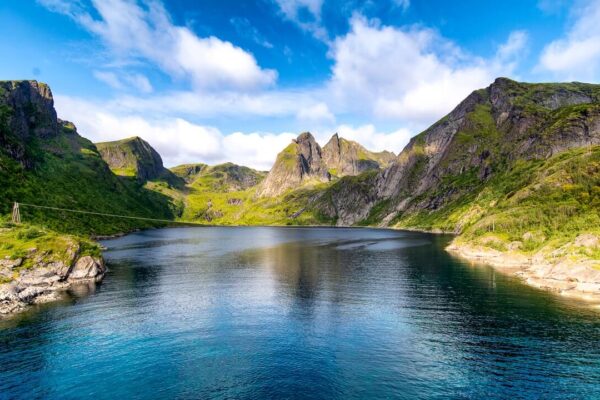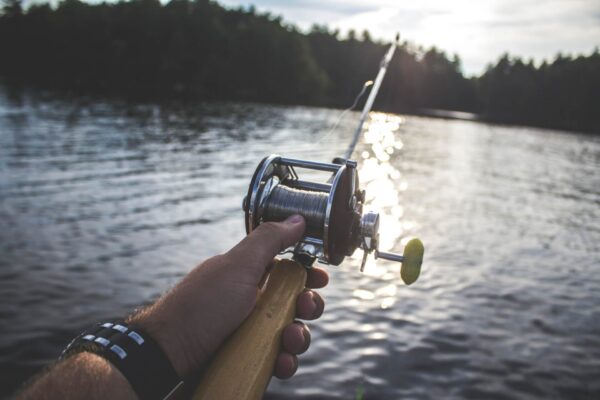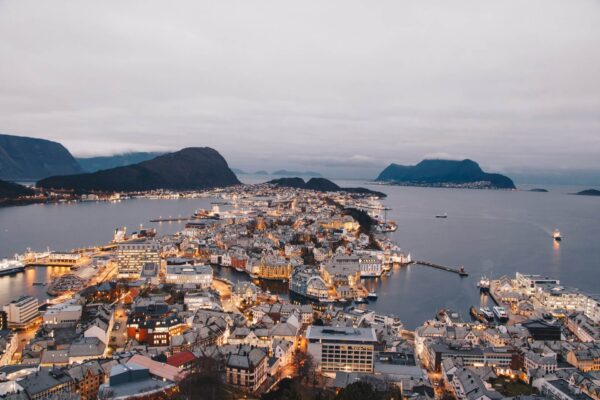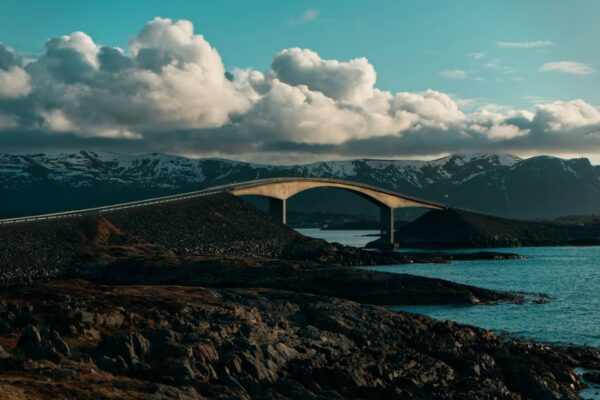For many, Norway is synonymous with fjords, mountains and snow – the country is known for its rugged and picturesque nature. However, Norway also offers lively cities and a range of cultural highlights – here we have summarised the most important sights that you shouldn’t miss!
Sightseeing in Oslo: the lively capital city of Norway
Oslo, the vibrant and green capital of Norway, has many sides and therefore has a lot to discover. In addition to typical sightseeing and city strolls, you can even go swimming or kayaking in the fjord right in the city. Whether new districts with modern architecture, harbour areas or charming neighbourhoods – Oslo has a lot to offer.
Opera
The Opera House is Oslo’s most-known landmark and immediately catches the eye with its modern design: It is modelled on a floating iceberg. The façade is made of a mixture of marble and granite and the roof is completely made of glass. The opera house is located directly on the water in the harbour basin and houses, among other things, the Great Hall, which is lined with fine oak wood. The Norwegian Opera has been performing here since 2008.
If you don’t necessarily want to attend a performance, you shouldn’t miss the building, as a walk on the ramp-like roof of the opera house is a must-do for tourists. In good weather, you can sit down and enjoy the view. The inside of the opera house is freely accessible outside performance times.
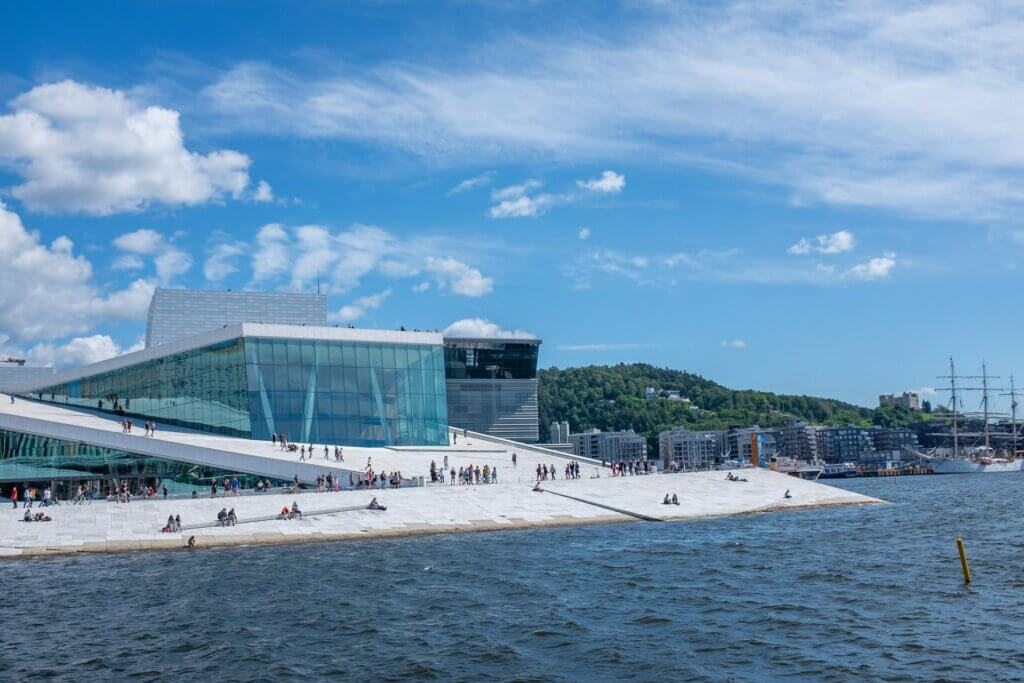
Library
Right next to the opera house is another architectural highlight of the city: the main building of the Deichman Library is one of the most modern libraries in Europe. It was opened in 2020 in the Bjørvika district, a former harbour area, and is actually home to much more than just a collection of books. On six open floors, there are various entertainment options, such as workshops, play areas for children, a small cinema, a gaming area, lounges and a restaurant.
The upper windows offer the best view of the opera house, the boats and the harbour promenade. Further in the background, you can even see the hills and the fjord.
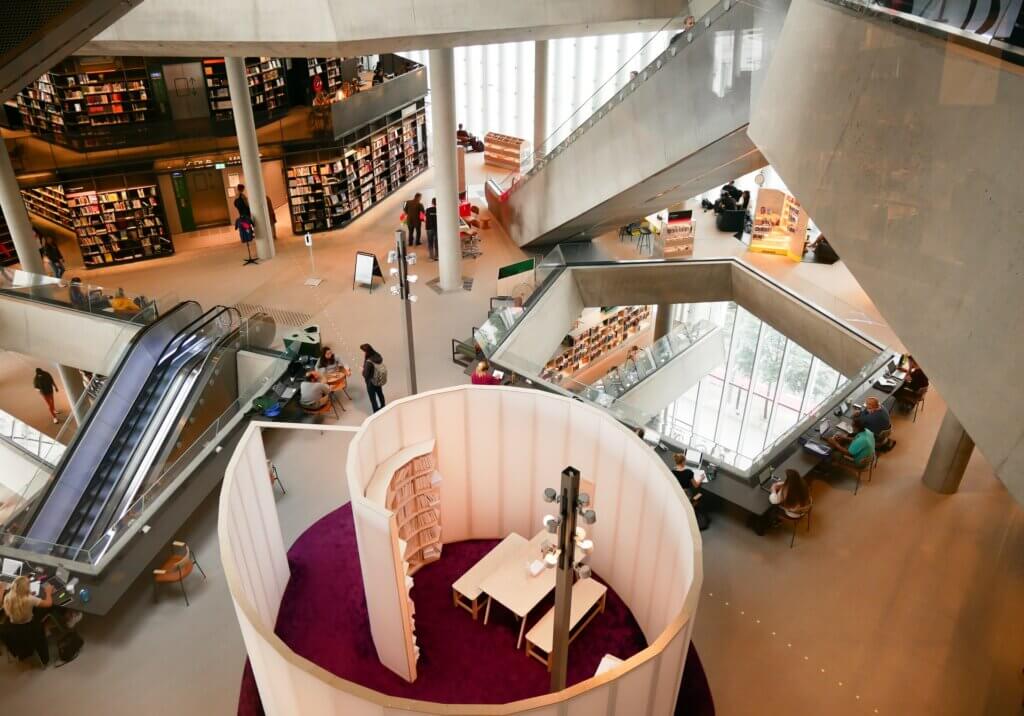
Museums: Munch Museum and More
As a city with a rich cultural programme, Oslo also has many interesting museums to offer, especially in the areas of history and art. We recommend, for example, the National Museum, Norway’s largest art museum, or the Munch Museum, which presents 28,000 works by the Norwegian painter Edvard Munch (including “The Scream”) in its permanent exhibition. Those interested in history can visit the History Museum, the Oslo City Museum, the Norwegian Resistance Museum or the Fram Polar Ship Museum.
Holmenkollen with ski jumping hill and museum
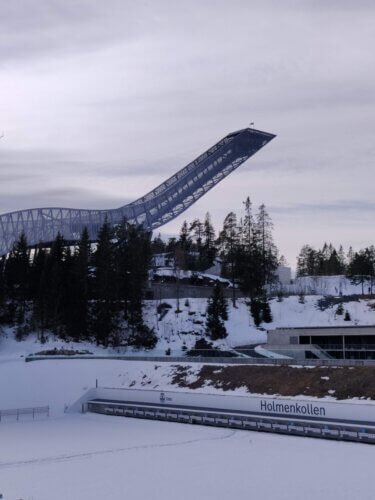
Another interesting museum is the Ski Museum, which opened in 1923 and is the oldest museum of its kind. It is located at another Oslo landmark that is inextricably linked to the city: the Holmenkollen.
Holmenkollen is a 370 metre high mountain that rises above Oslo and is primarily known for winter sports. It is home to the Holmenkollenbakken, the oldest and perhaps most famous ski jumping hill in the world, as well as the cross-country skiing and biathlon stadiums.
The impressive sports facilities and museum are not only worth a visit during World Cup competitions and World Championships, when the area is transformed into a huge party mile.
Royal Castle
When in Oslo, you should also visit the Royal Palace, which was built between 1824 and 1848. It is located to the west of the city centre and is surrounded by a large park. Among other things, it houses the King’s and Queen’s flats and is the meeting place for the King and Cabinet.
The changing of the guard takes place here every day at 1.30 pm. In summer, the palace is open to visitors and you can book a 60-minute guided tour. If you are in Oslo on 17 May, Norway’s National Day, you can cheer on the Norwegian royal family here with thousands of visitors.
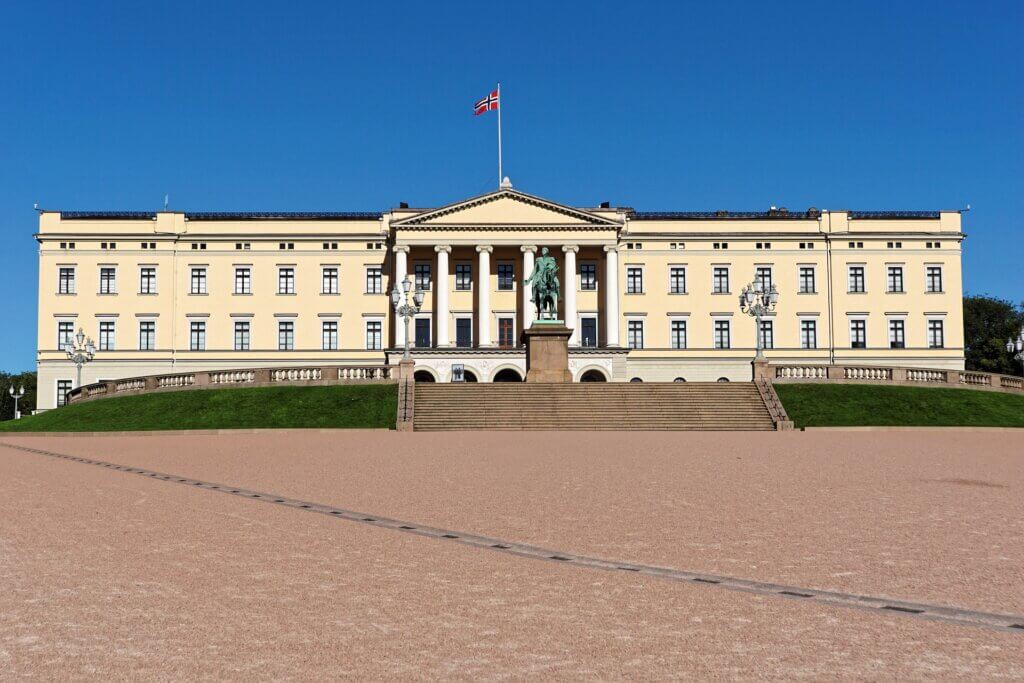
TusenFryd Amusement Park
For adrenaline junkies, Norway’s largest amusement park is about 35 minutes’ drive from Oslo. If you prefer, take the route along the fjord, which is just a few minutes longer. The TusenFryd park in Vinterbro is open from May to October and offers fun for young and old: rollercoasters, water rides, carousels and much more. A great destination for families.
Norway Sights Nature: rocks, fjords, waterfalls
Norway’s nature is spectacular and world-famous – tourists from all over the world come here to experiences the picturesque fjords and mountains. Between the well-known spots, there are always hidden highlights in between.
Preikestolen
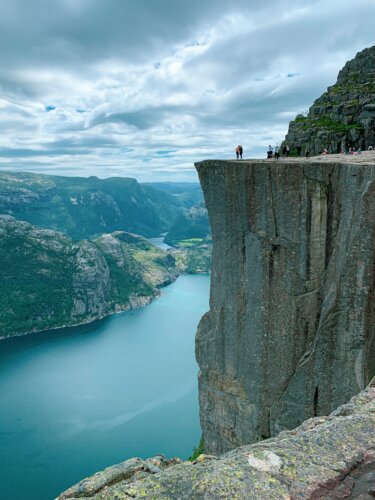
Do you want to enjoy the spectacular view over the pure nature of Norway at 604 metres? Welcome to Preikestolen!
The natural rock platform attracts thousands of hikers every year who don’t want to miss out on a visit to the “priest’s chair”. It is located in the south-west of Norway, not far from the city of Stavanger.
The platform, which measures around 25 x 25 metres, is the ideal destination for a hike. It takes around four hours to complete the challenging route, which leads over hill and dale through the Norwegian countryside.
It was probably formed 10,000 years ago when water froze in the crevices of a glacier, blasting away large parts of the rock and exposing the current plateau.
Trolltunga
Trolltunga – “Troll’s Tongue” in English – is located on the Hardangerfjord. It is a mountain promontory that stands out spectacularly at an altitude of over 1,100 metres to the west of the Sørfjord and offers an incomparable view of the surrounding valley.
The hike through the Norwegian high mountains should be well planned and prepared, as depending on the tour, route and starting point, it can take over 10 hours and cover up to 28 kilometres. Not only beginners should therefore consider taking part in a guided tour.
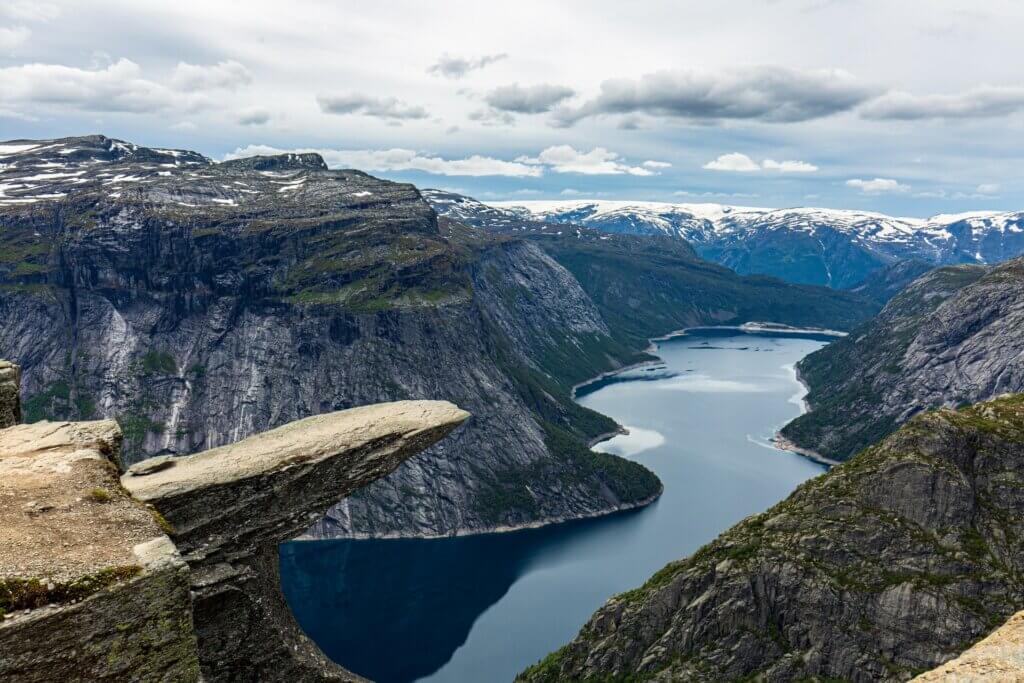
Geirangerfjord
The Geirangerfjord – one of the most beautiful fjords in Norway and a UNESCO World Heritage Site since 2005 – is representative of Norway’s vast fjord world. There is a lot to experience on and around the fjord, which stretches across western central Norway, for example on kayak tours, boat trips or hikes. The numerous fjord farms and the Seven Sisters, a series of waterfalls, are also worth a visit, as are the towns of Geiranger and Ålesund.
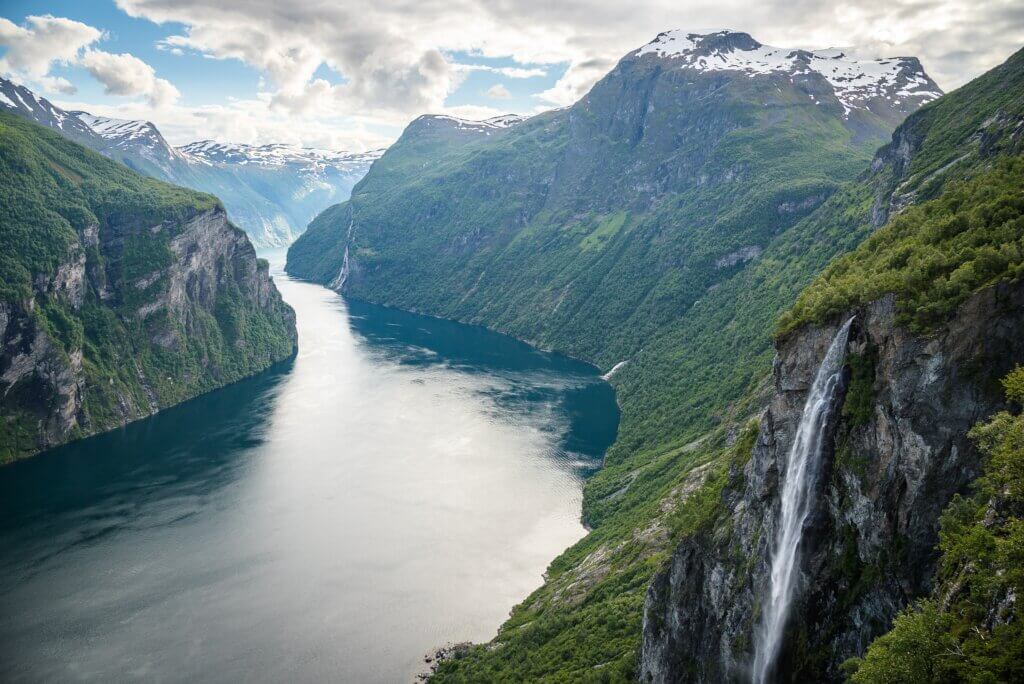
Vøringsfossen
Vøringsfossen is a spectacular waterfall with a drop of 182 metres from the western edge of Hardangervidda. It is one of the best-known and most popular waterfalls in Norway and is therefore also a popular hiking destination. The hike to Vøringsfossen takes you through an impressive river valley on the edge of Hardangervidda and doesn’t take too long, although it is a little more challenging.
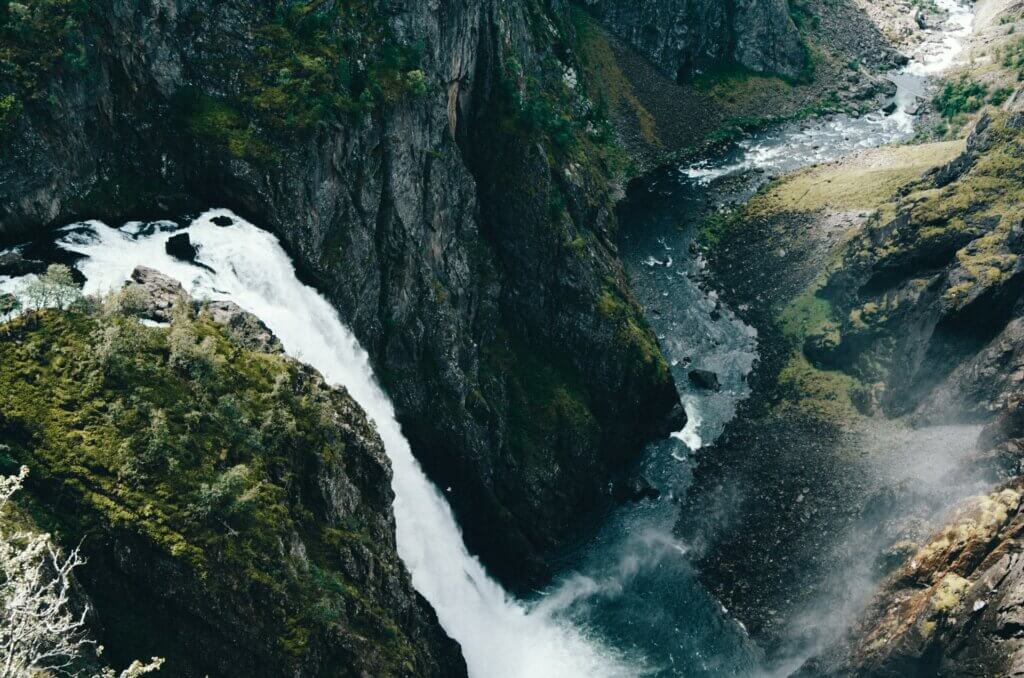
Trollstigen
The Trollstigen near Åndalsnes is world-famous and one of the most spectacular roads in the world. The route is a steep and winding road that winds its way through the mountains and offers breathtaking views of the surrounding landscape. The Trollstigen is notorious for its eleven hairpin bends and a gradient of 10%, making it a challenge for any driver. At the highest point of the road there is a viewpoint that offers a fantastic panoramic view of the valley and the surrounding mountains – pure Norway!
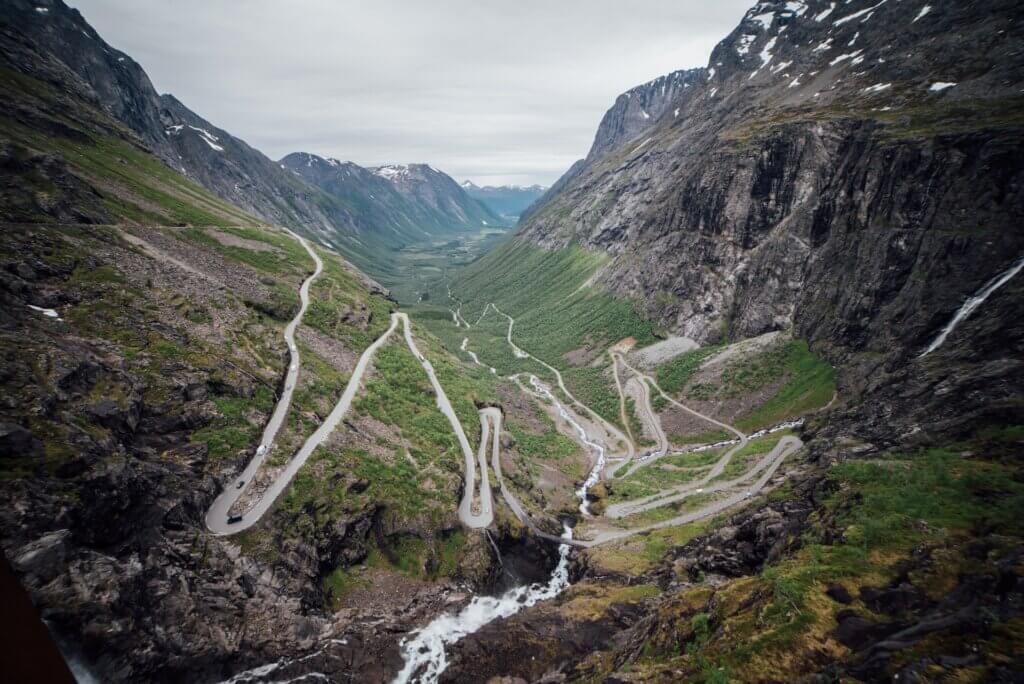
Sightseeing in Bergen: Norway’s second largest city
The city of Bergen may be Norway’s second largest city, but it still retains the cosy charm of a small town. Situated between hills and fjords, the country’s unique landscape is particularly striking here.
UNESCO World Heritage Site Bryggen
Probably Bergen’s most famous photo motif is Bryggen with its pier and colourful old wooden houses. From here you have a view of the Vågen bay. This is the oldest settlement in the city, dating back to 1070.
Bryggen is known as the “Hanseatic landing stage”, which bears witness to a time when Bergen was the trading centre of Norway and the headquarter of the Hanseatic League. Today, Bryggen is on the UNESCO World Heritage List. You can stroll through the small alleyways between the listed houses, which are home to shops, restaurants, museums and galleries.
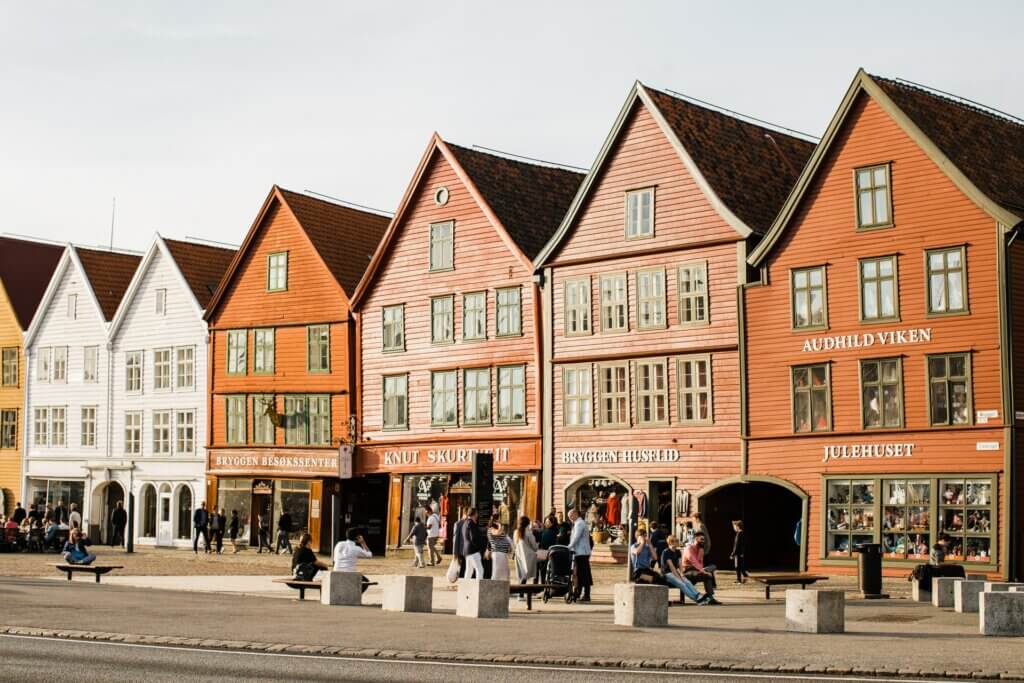
Fjords
First and foremost, Bergen’s location is what makes the city so unique: it lies between Norway’s largest fjords, the Hardangerfjord and the Sognefjord.
It is not for nothing that Bergen is called “the gateway to the fjords” or “the capital of the fjords”: The Hurtigruten mail boat route starts from here, travelling across the fjords and further along the Norwegian coast. Day trips on excursion boats across the fjords are also possible and take you to the surrounding idyllic fjord villages.
Mountains and hills
Bergen’s second nickname is “the city between the seven mountains”. From the peaks you have a fantastic view over the city and the unique panorama of the fjord landscape with its islands.
The 320 metre-high Fløyen peak is easy to reach with the Fløibahn, which takes you up the steep ascent in just a few minutes. Various hiking routes start from Fløyen and there is a café and a restaurant. The highest mountain is Ulriken at 643 metres. It can be reached by cable car. If you are looking for more adventure, you can of course also go hiking on a “fell tour” and climb the mountains. The hilly landscape is dotted with many small houses in Bergen on the green slopes.
Northern Norway Sightseeing
Norway is long and narrow – the country stretches far to the north and has a lot of land above the Arctic Circle. Accordingly, it is also a true winter paradise. Whether on foot, on skis or in a dog sled – the northernmost parts of Europe have a lot to offer.
North Cape
For many, the North Cape is the ultimate destination for a Scandinavian road trip. As the (supposedly) northernmost point of the European mainland, it not only has a special geographical significance, but is also an ideal end point for a journey from southern Scandinavia. It is located on the island of Magerøya and juts out into the Arctic Ocean.
The most famous scenic landmark of the North Cape is the viewing platform at Nordkapphallen. In addition to the museum, including a cinema, restaurant and post office, you will also find the Nordkap Globe, which most travellers want to reach. The museum has been located on the 307 metre high cliff since 1978.
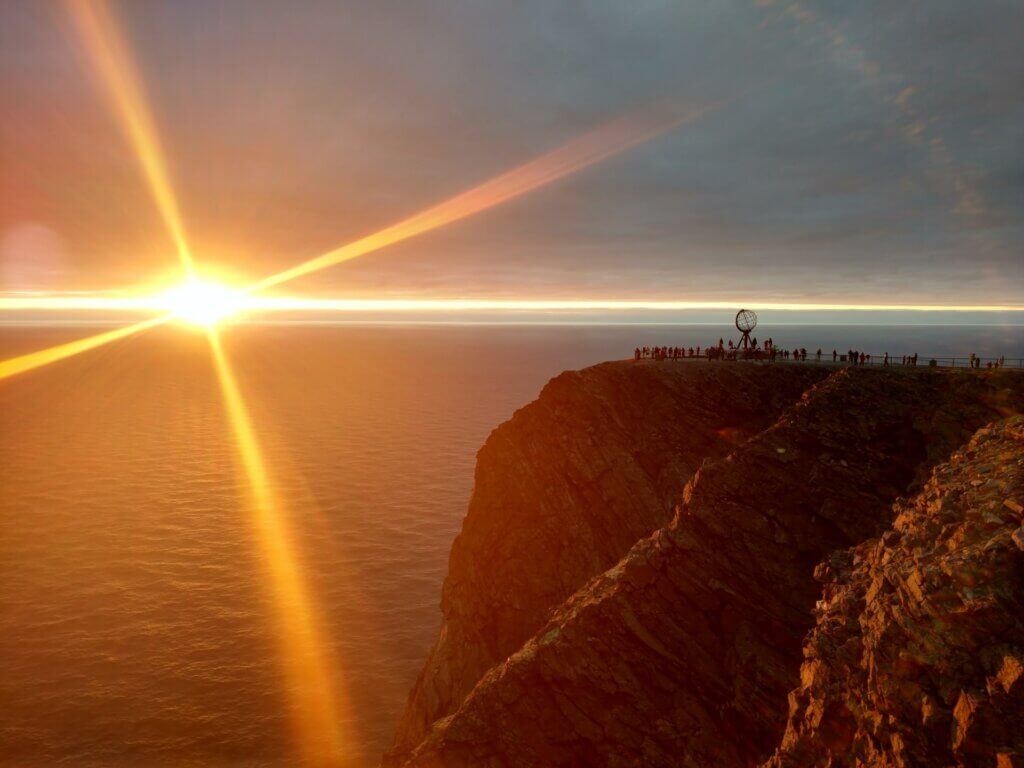
Northern Lights
If you want to see the Northern Lights in Norway, you should travel as far north of the Arctic Circle as possible. Tromsø is a somewhat larger city and the furthest north in Norway. Here you have the opportunity to experience the aurora borealis – usually green – in the sky for several hours a day. There is a permanent exhibition on auroras at the local university museum, where you can find out more about their formation.
But there are also many other smaller places in northern Norway where special accommodation and tours are offered. If you want to take it easy, you can book a cruise along the coast of Norway.
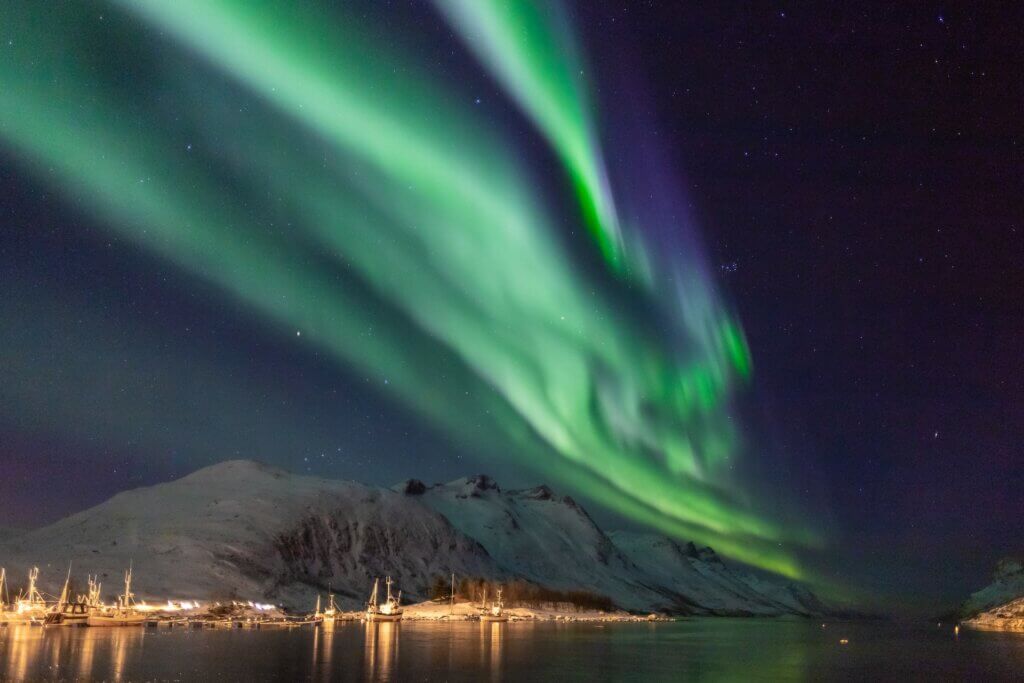
Narvik
Fjords, mountains, northern lights: Narvik has everything you would expect from a typical outdoor holiday in Norway. In addition to spectacular Arctic nature, Narvik is also historically interesting – traces and consequences of the Second World War are still visible in the city and the surrounding area, for example on the route of the Ofoten railway. The city has a lot to offer culturally as well, as it is characterised by the Sami, the indigenous people of Northern Europe.
Svalbard
Svalbard is an archipelago of over 400 islands located between Norway and the Arctic, stretching some 450 kilometres north-south and 330 kilometres west-east, and is the northernmost part of Norway. It has become very popular as a spectacular holiday destination – mainly due to the beautiful nature of the Arctic archipelago.
Several hundred polar bears live here, which can be observed in the wild under the guidance of guides. You can also observe walruses and reindeer there. On addition, there is the beautiful landscape. Glaciers, pack ice and mountains invite you to go on tours across the various islands. You can also experience the midnight sun, polar night and northern lights in full force.
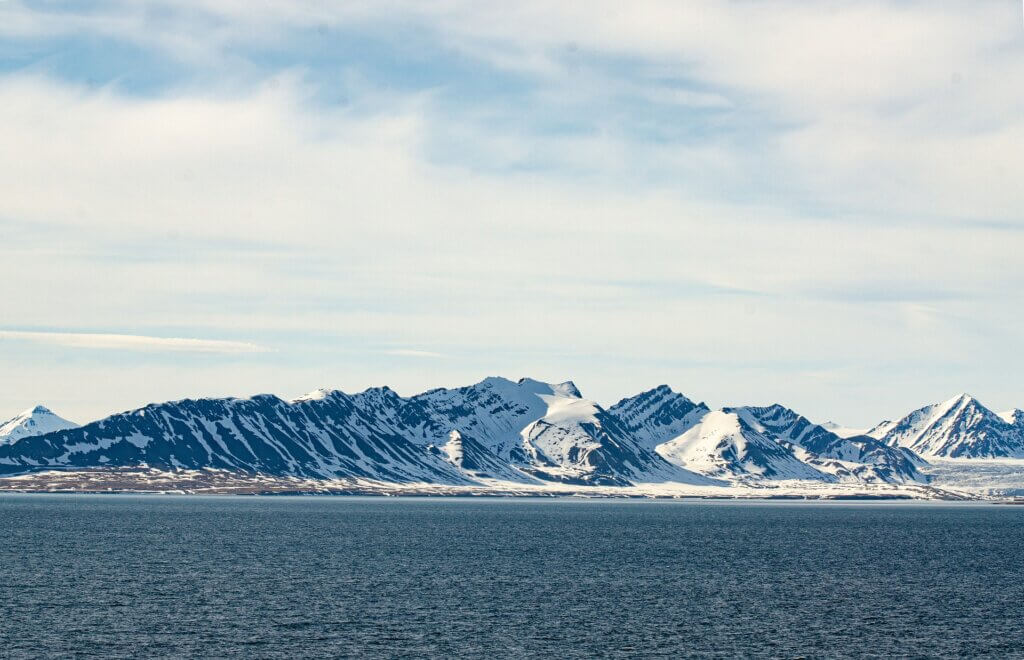
Lofoten
The Lofoten Islands are a popular holiday destination off the north-west coast of Norway. The archipelago consists of around 80 islands and is known for its picturesque nature. If you love the Norwegian wilderness and enjoy being outdoors, Lofoten is the perfect place for you, as the islands invite you to go on numerous active tours.
But the small coastal and fishing villages are also an attraction in their own right. For example, Reine on the western tip of the Lofoten Islands is well known. The small red houses set against the Lofoten mountain panorama are depicted in many famous photos of the archipelago.
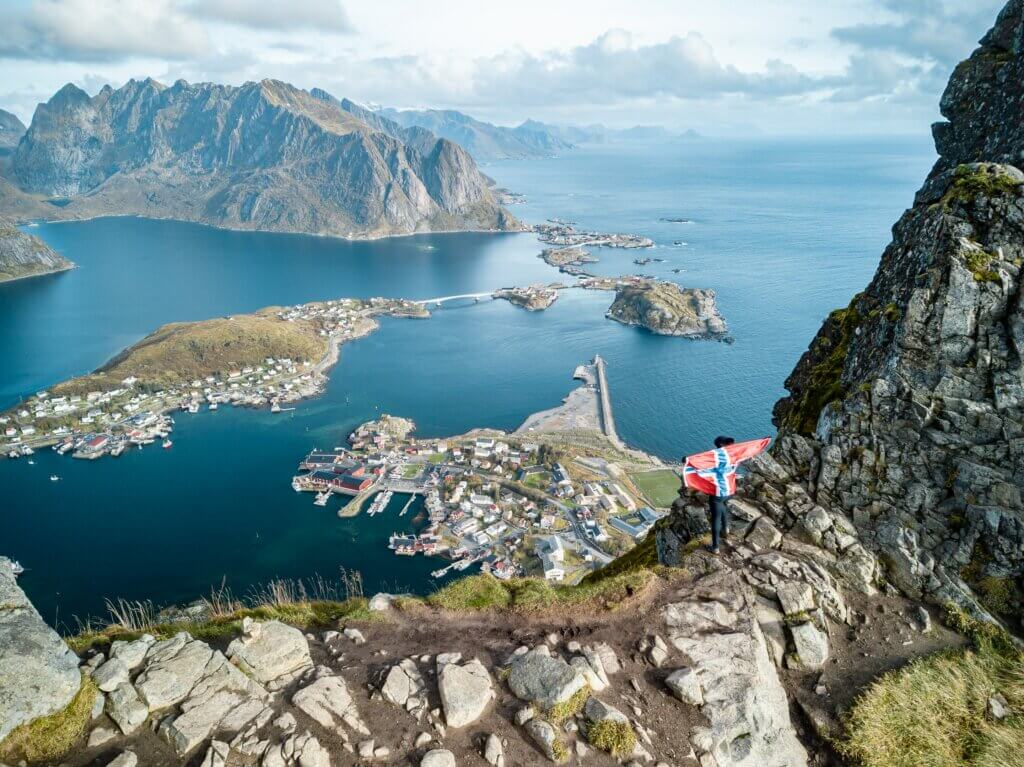
Norway sightseeing in the south
Relaxed and maritime coastal life can be found in the south of the country. Here you will find charming towns and villages and fantastic beaches. A beach holiday in Norway? No problem in the south!
Kristiansand
Kristiansand is the largest city in the southern part of Norway and is located on the coast – not that far from Denmark, which is why ferries also arrive here. In Kristiansand, urban city life meets sun, beach and sea.
But you can not only enjoy a beach holiday in Norway’s fifth largest city, you can also explore the surrounding nature – for example on one of the offshore islands or the mystical nature parks – and visit one of Norway’s most popular attractions: the Kristiansand Dyrepark, a large zoo and amusement park.
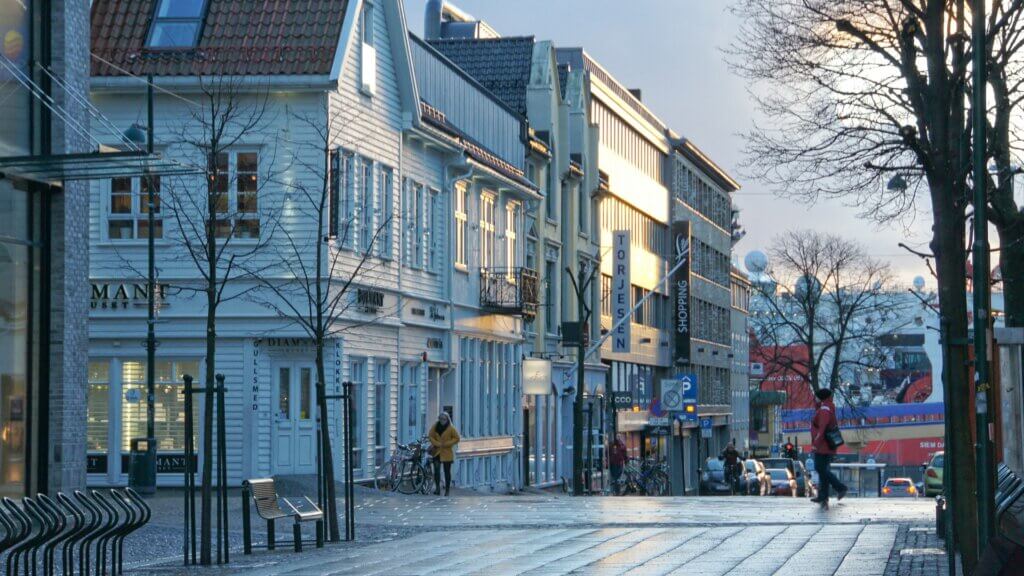
Smaller coastal towns and beaches
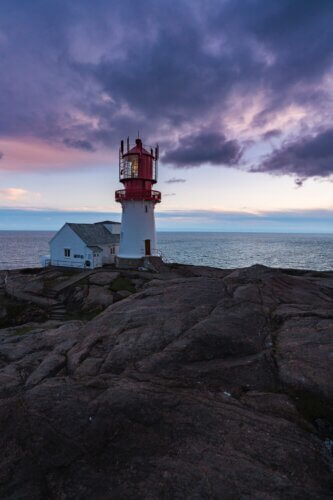
In addition to Kristiansand, there are also a number of smaller towns on the southern Norwegian coast that are well worth a visit, such as Flekkefjord, Arendal, Grimstad, Lillesand, Lindesnes and Mandal.
With their white wooden houses and narrow streets, the villages have a very special charm and invite you to stroll around.
They also offer an ideal starting point for exploring the southern Norwegian islands – we recommend the village of Lyngør, for example, which stretches across several islands.
Many of the towns also have fantastic beaches where you can relax and enjoy a leisurely swim. One popular beach resort is Lista, which is also a surfer’s paradise.
Brufjell
Brufjell is an impressive mountain in the south of Norway with a fantastic view from its summit at 550 metres above sea level. At the foot of the mountain there is a picturesque lake called Frøyvatn, which is surrounded by dense forests and rocks. One of the mountain’s most famous attractions are the Brufjellshålene glacier potholes, which consist of several holes and passages that can be explored – in general, the area around Brufjell is a paradise for outdoor enthusiasts.
Norway Viking sights
Alongside Denmark (and later Iceland), Norway is perhaps the most important country in the history of the Vikings. Accordingly, remains and artefacts of this proud history can be found in large parts of the country and are exhibited in numerous museums. There are also many Viking villages where you can get very close to life 1000 years ago.
Oslo Viking Ship Museum
Perhaps the most popular Viking museum in the whole of Norway is the Viking Ship Museum on the Bygdøy peninsula near Oslo. It is home to the three original Viking ships Oseberg, Tune and Gokstad, which are among the best-preserved Viking ships in the world. However, the museum is currently closed until 2025/26 due to renovation work – as an alternative, you can visit the Historical Museum in Oslo.
Viking town of Kaupang
In Larvik, which lies south of Oslo and Drammen on the east coast of Norway, you will find Kaupang Vikingbyen – Norway’s first town. Although nothing remains of the town founded in 800, you can travel back in time to the world of the Vikings and visit reconstructed houses and take part in typical Viking activities.
Avaldsnes
One of the most historic places in Norway is the village of Avaldsnes on the island of Bukkøya on the south-west coast of Norway, north of Stavanger. The island was one of the residences of Harald Fairhair, the country’s first king. Today, Avaldsnes is home to an authentically reconstructed Viking court and a museum.
Sagastad Viking Museum
The popular modern museum and Viking centre Sagastad is located in Nordfordeid. The centrepiece of the museum is the 30-metre-long Myklebust ship – the largest known Viking ship in Norway. There are also interactive exhibitions, VR experiences and a museum cinema. The exhibition is also available in other languages.
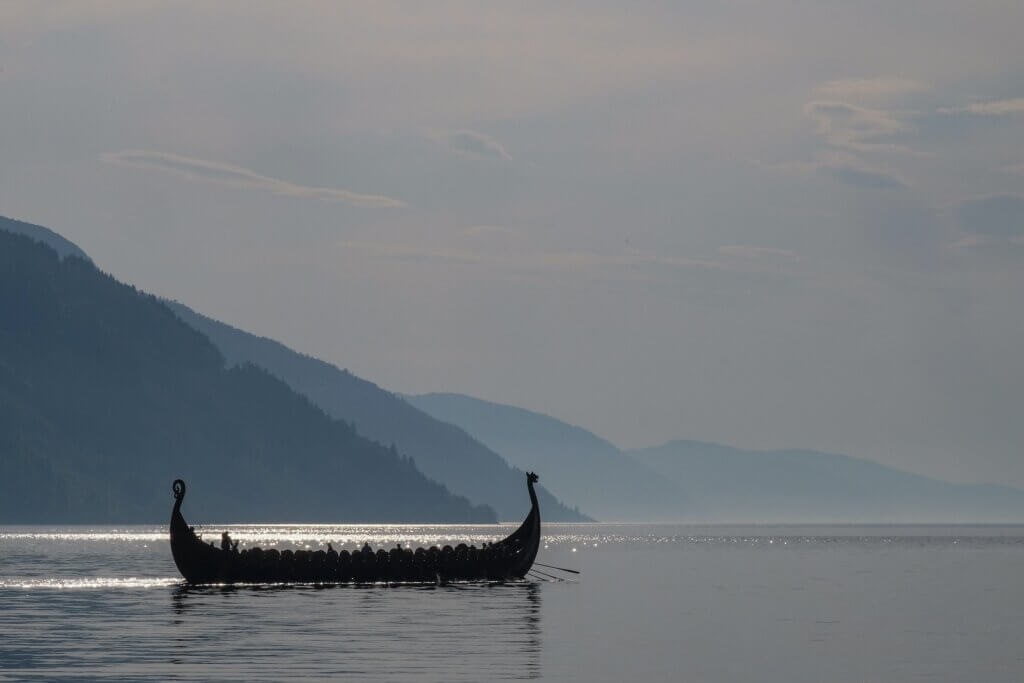
Viking village Njardarheimr
The Viking village of Njardarheimr in Gudvangen is located near the town of Flåm on the Sognefjord. The open-air museum is a real hotspot for Viking fans – around 400 “real Vikings” show how the local population lived 1000 years ago and have a wealth of knowledge that they are happy to share with curious visitors. Guided tours are offered in the village and you can also try your hand at axe throwing or archery. If you want to try traditional Norwegian food, you can visit the Viking Diner at the entrance to the village.
Lofotr Viking Museum
The Lofotr Viking Museum is located on the Lofoten Islands, more precisely on the island of Vestvågøya. It is centred around the longest Viking building ever discovered. The 83 metre long building has been reconstructed and contains numerous artefacts from the Viking Age. As it is an interactive museum, you can also take part in all kinds of activities. The highlight, however, is the five-day Viking Festival, which is organised every August.
